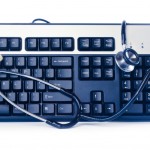EHRs shown to improve patient safety and reduce medical errors
The Office of the National Coordinator for Health Information Technology recently did a presentation during Health IT Week on how electronic health records are capable of enhancing patient safety while increasing the quality of care by providers and lowering the possibility of medical errors when providers adhere to meaningful use standards. According to the ONC's presentation, over half of physicians feel that their EHRs have played an important role in assisting them in providing patients with the best care. Providers that strictly comply to principles of meaningful use, such as computerized provider order entry and electronic documentation, reported a drastic reduction in events where patients feel their safety is compromised and a 52 percent decrease in the amount of adverse drug events.
Research finds providers relying heavily on EHRs
According to the ONC, the 2013 National Ambulatory Medical Care Physician Workflow Survey found that three times the number of physicians saw that their EHRs helped them avoid a medication error. Almost 70 percent said that lab and medication reminders or alerts aided them in preventing potential patient harm, and 45 percent reported a specific EHR feature that had alerted them to a possible medication error. EHRs also helped twice as many physicians choose the correct lab test, reported the ONC.
The workflow study also found that only 14 percent of doctors reported that the alarms and reminders distracted them or caused them to miss something important, while 51 percent felt positively toward their EHR alerts. In fact, 47 percent saw an improvement in the preventative care they provided due to EHR features, while 39 percent said that the chances were greater that they would meet clinical guidelines for chronic disease care when aided by their electronic device.
A study conducted by the Carneige Mellon University Living Analytics Research Centre added that enhanced EHR adoption has accounted for a 27 percent reduction in aggregated patient safety events, with a 30 percent decline in negative medication events and a 25 percent decrease in complications regarding tests, treatments or procedures. One specific meaningful use principle, computerized provider order entry adoption, resulted in a 14 percent drop in events that ended in unfavorable reactions to a patient, while electronic documentation lowered "near miss" situations by almost a third.
EHRs and a clear understanding
One of the biggest benefits of meaningful use is that it has significantly improved patients' understanding regarding their health, how to stay healthy and what was discussed with their doctor after they leave the health center, according to the Institute for Family Health. This is due to the adoption of meaningful use principles, such as providing an after-visit summary.
The medical director of Urban Horizons, Dr. Sarah Nosal, praised the outcomes of EHRs.
"E-prescriptions decrease errors from handwriting, check for drug interactions, and decrease wait time for medications," she said, as quoted by the Institute of Family Health.
According to EHR Intelligence, although meaningful use principles have already accounted for essential improvements for health care providers and their patients, there are still issues that need to be eliminated. To continue the trend of using EHRs to prevent patient safety errors, providers must make sure that they fully understand the role of health IT in patient safety, for a report from the Economic Cycle Research Institute showed that a good amount of adverse incidents have happened as a result of EHR system interface issues, software configuration errors and improper inputs.
It is of vital importance that the provider has the ability to determine whether the error took place due to a user issue or a software issue. This is key for accurate reporting and solutions to the problem, according to the ECRI report. The industry stakeholders have to work together to prevent the consequences that result when providers do not use health IT properly.



